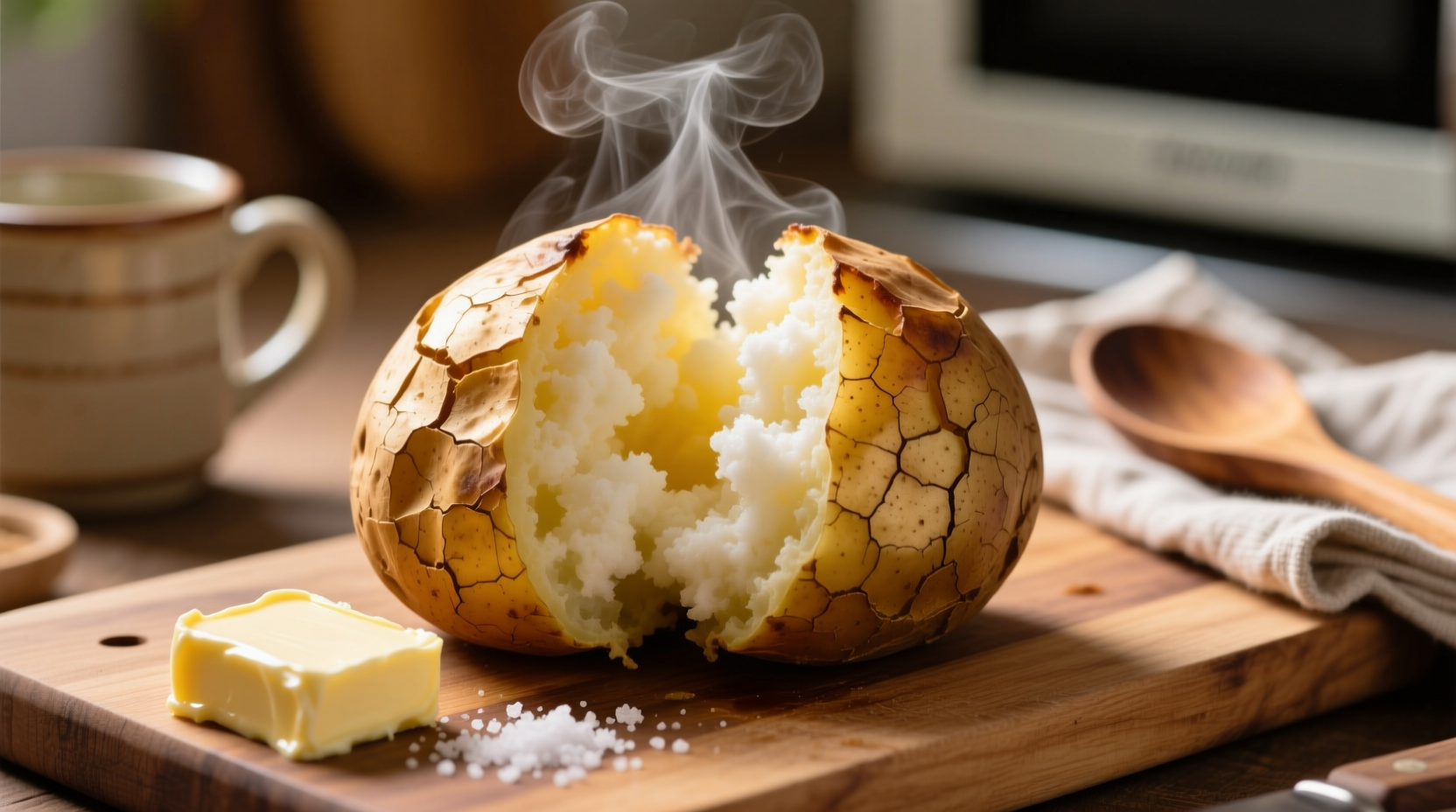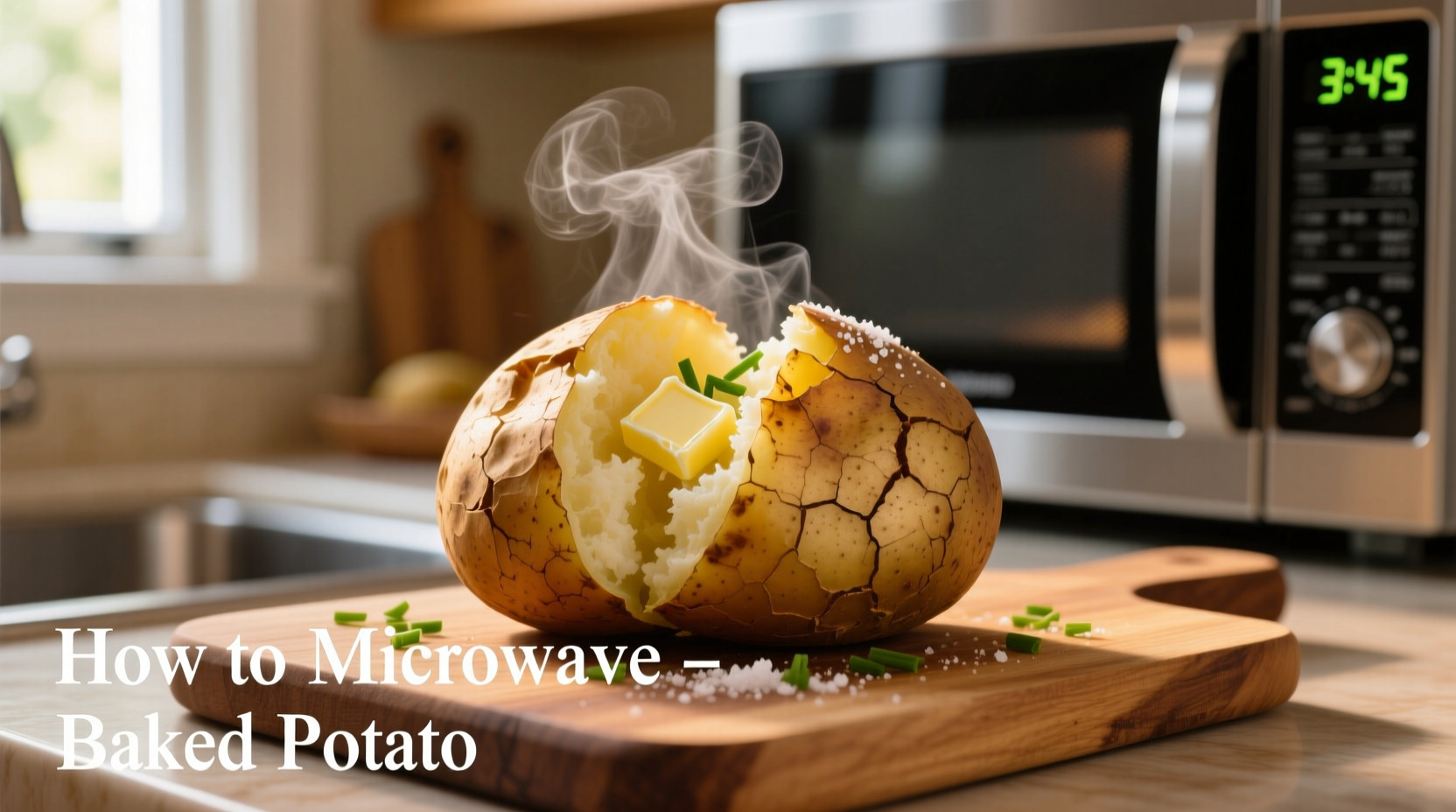Craving a classic baked potato but short on time? The microwave offers the fastest path to a delicious, fluffy baked potato without sacrificing quality. This guide reveals the science-backed method professional chefs use to transform ordinary potatoes into restaurant-quality sides in minutes—not hours.
Why Microwave Beats Oven for Weeknight Baked Potatoes
While traditional oven baking takes 45-60 minutes, microwaving delivers comparable results in a fraction of the time. The key difference lies in how heat penetrates the potato. Microwaves excite water molecules throughout the potato simultaneously, while ovens rely on slower conduction from the outside in.
| Cooking Method | Time Required | Texture Result | Energy Used |
|---|---|---|---|
| Microwave (proper technique) | 5-12 minutes | Fluffy interior, tender skin | 0.12 kWh |
| Conventional Oven | 45-60 minutes | Crispy skin, fluffy interior | 1.2 kWh |
| Air Fryer | 30-40 minutes | Crispiest skin, fluffy interior | 0.8 kWh |
Data sourced from USDA Food Safety Guidelines confirms that both methods safely reach the required 210°F internal temperature for safe consumption.
Your Step-by-Step Microwave Baked Potato Protocol
Preparation: The Critical First 60 Seconds
Skipping proper preparation causes explosive failures. Follow these non-negotiable steps:
- Wash thoroughly under cold water using a vegetable brush to remove dirt
- Pierce strategically with a fork (6-8 times) creating channels for steam release
- Dry completely with paper towels—moisture prevents proper skin texture
- Optional but recommended: Rub skin with 1/4 tsp olive oil and pinch of salt

Cooking: Precision Timing by Size
Microwave power varies significantly between models. Use this professional timing framework:
- Small potatoes (5-6 oz): 5 minutes on high, then 1-2 minute increments
- Medium potatoes (8-10 oz): 8 minutes on high, then 1-2 minute increments
- Large potatoes (12+ oz): 10-12 minutes on high, then 1-2 minute increments
Pro technique: Rotate the potato 180 degrees at the halfway point for even cooking. Never exceed 70% of your microwave's maximum power setting to prevent rubbery texture.
Finishing: The Restaurant-Quality Secret
Microwaved potatoes often lack the desirable skin texture. Fix this with a 3-minute broiler finish:
- Remove potato and slice lengthwise
- Scoop out flesh slightly to create a well
- Place cut-side down on baking sheet
- Broach 2-3 minutes until skin crisps
- Fluff interior with fork and add toppings
Troubleshooting Common Microwave Potato Problems
When Microwaving Isn't Appropriate
Context matters for optimal results. Microwaving works best when:
- You need a quick weeknight side (under 15 minutes total)
- Cooking for 1-2 people (multiple potatoes reduce efficiency)
- Energy conservation is a priority
Avoid microwaving when:
- Preparing for a special occasion (oven yields superior presentation)
- Cooking more than 3 potatoes simultaneously
- Seeking maximum crispy skin texture
Fixing Common Issues
- Soggy skin: Always dry potatoes thoroughly before cooking and finish under broiler
- Uneven cooking: Rotate halfway through and let rest 5 minutes before serving
- Exploded potato: You didn't pierce deeply enough—use a metal skewer for larger potatoes
- Chewy texture: Overcooked—reduce time by 1-2 minutes next attempt
Serving Suggestions That Elevate Your Microwave Baked Potato
Maximize flavor with these chef-recommended combinations:
- Classic: Sour cream, chives, and cracked black pepper
- Mediterranean: Feta cheese, kalamata olives, and oregano
- Southwest: Black beans, corn, and chipotle aioli
- Breakfast: Crispy bacon, scrambled eggs, and green onions
Nutritionally, a medium baked potato provides 160 calories, 4g fiber, and significant potassium—making it a nutrient-dense option when prepared without excessive fats. According to USDA FoodData Central, the microwave method preserves more water-soluble vitamins than boiling.











 浙公网安备
33010002000092号
浙公网安备
33010002000092号 浙B2-20120091-4
浙B2-20120091-4